


|

|
Submerged Aquatic Vegetation |
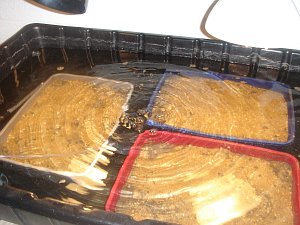 | The tub is set up for the plants to grow, April 12, 2006. |
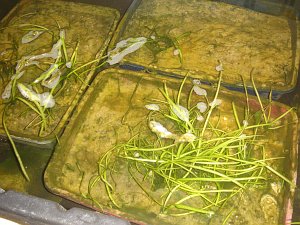 | The plants have grown, June 23, 2006. The plant is wild celery, Vallisneria americana. |
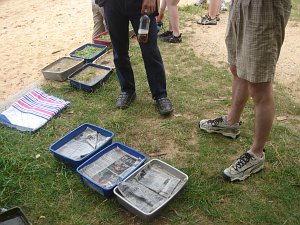 | Transported to the Potomac River at the Mason Neck National Wildlife Refuge for planting, June 24, 2006. |
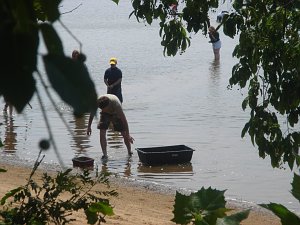 | The tub is prepared to be floated out to the planting site. |
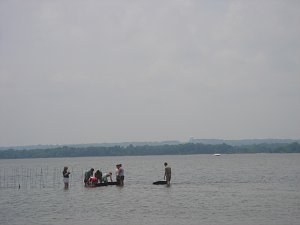 | Planting the wild celery in the Potomac River. The river is here at low tide. |
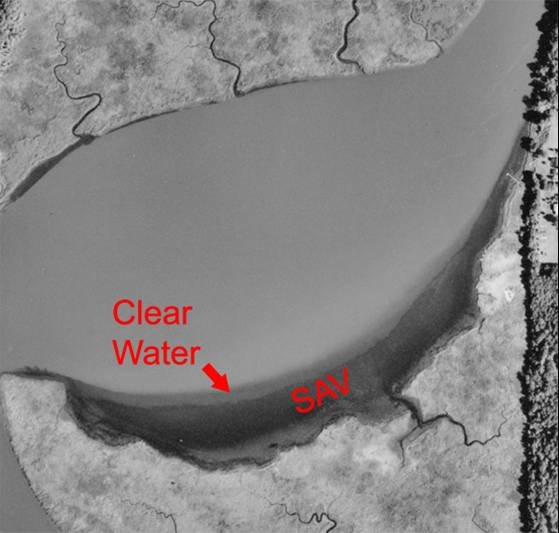 When a river or stream is wide enough to break the tree canopy and allow the sunlight through to the water, submerged aquatic vegetation may grow.
At the local scale, the underwater plants help clarify turbid water in rivers by slowing water velocity, increasing removal (settling) of particulates, and stabilizing sediment, reducing sediment re-suspension.
This can be seen in the picture at right showing the Patuxent River in 2001. The area adjacent to the aquatic vegetation is clear, while the rest of the river is turbid.
When a river or stream is wide enough to break the tree canopy and allow the sunlight through to the water, submerged aquatic vegetation may grow.
At the local scale, the underwater plants help clarify turbid water in rivers by slowing water velocity, increasing removal (settling) of particulates, and stabilizing sediment, reducing sediment re-suspension.
This can be seen in the picture at right showing the Patuxent River in 2001. The area adjacent to the aquatic vegetation is clear, while the rest of the river is turbid.
Photograph courtesy of the Chesapeake Bay Foundation.